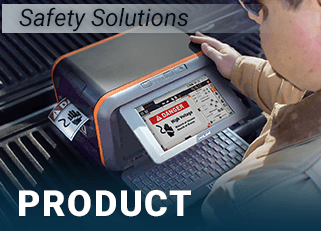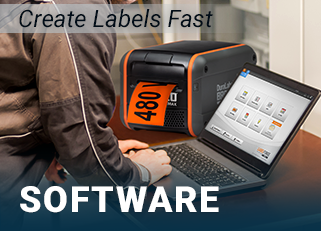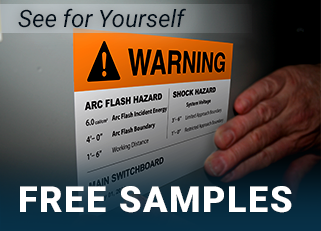Understanding the SDS
03
February,
2023
5 MINUTE READ

Chemical safety can be a massive puzzle, with a variety of interconnected elements: inventory lists, storage requirements, purchasing, disposal, and training. In this puzzle, the Safety Data Sheet, or SDS, is a sort of "corner piece" to start with. This document provides detailed information on every aspect of a given product, from its particular chemical hazards down to miscellaneous regulatory requirements. All the data is there in the SDS.
The tricky part is that an SDS is a technical document with more than a dozen sections, written primarily by chemists and safety engineers. It isn't always an easy thing to understand. A little preparation is needed for the average reader to take full advantage of the SDS format.
Origins of the SDS
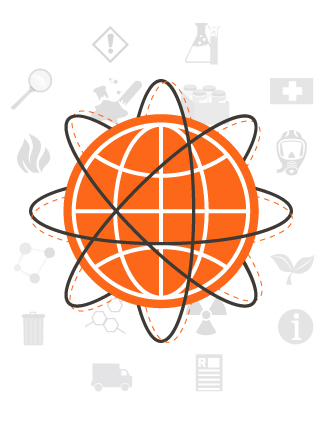 The most popular international standard for classifying hazardous chemicals is the United Nations' Globally Harmonized System, or GHS. It was created to offer a consistent and effective way to classify and document chemical hazards, and many nations around the world have adopted the system, or at least parts of it. As these nations write GHS into their own laws, many facilities must change their chemical management systems and documents.
The most popular international standard for classifying hazardous chemicals is the United Nations' Globally Harmonized System, or GHS. It was created to offer a consistent and effective way to classify and document chemical hazards, and many nations around the world have adopted the system, or at least parts of it. As these nations write GHS into their own laws, many facilities must change their chemical management systems and documents.
Before GHS was created, there were several systems for documenting chemical hazards; some worked well, and some didn't. Few were compatible with each other. This led to wide confusion about what the hazards of a given chemical actually were, and how the material could be safely handled, used, and disposed. The GHS approach and its single, standardized SDS format aim to resolve these problems.
In the United States, the major implementation of GHS is in OSHA's Hazard Communication Standard, published in 2012 and better known as HazCom 2012. These regulations can be found in 29 CFR 1910.1200. OSHA's implementation is not identical to the standard as published by the U.N., but the two are similar enough that an SDS can easily match both systems at the same time. An example format for an SDS is given in Appendix D to the HazCom regulations.
The Standard SDS Structure
The standard SDS format that's defined in GHS and HazCom 2012 uses sixteen sections. Because of the amount of information involved, this can seem overwhelming, but the sections are organized to be helpful.
Readers who aren't already familiar with chemical documentation, but are looking at a Safety Data Sheet for the first time, will almost certainly need the information required in sections 1 and 2-typically, starting at the top of the first page. These sections include fundamental information about a material's identity and source, and its associated hazards and safety precautions. Readers who need more in-depth details or more technical recommendations will typically have time to read down to later sections, which include details like the material's chemical composition and regulatory information.
For information on the sixteen sections of the SDS, and what each part needs to contain, see the parts of an SDS.
Reading an SDS
If you need to read an SDS to find information for a given material, there are only two steps for you to follow. First, find the right document; second, find the specific details you need.
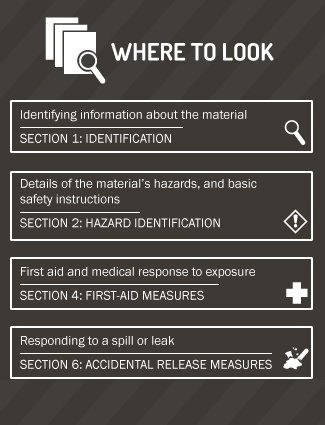 Finding the right document should be easy. Every chemical manufacturer or importer must provide an SDS for any hazardous materials they sell, and OSHA requires that all workplaces in the United States keep an SDS for every hazardous chemical onsite. If you need to find a new SDS, you can often search the internet for the name of the material and the word "SDS," and find exactly what you need; you can also contact the company that supplies the material and request a copy directly.
Finding the right document should be easy. Every chemical manufacturer or importer must provide an SDS for any hazardous materials they sell, and OSHA requires that all workplaces in the United States keep an SDS for every hazardous chemical onsite. If you need to find a new SDS, you can often search the internet for the name of the material and the word "SDS," and find exactly what you need; you can also contact the company that supplies the material and request a copy directly.
Once you have an SDS, check the first section for the name and basic description of the material, to make sure that you are looking at the right information. The product identifier, or name of the material, should exactly match the name that appears on the material's container. You'll also want to ensure the SDS is up-to-date; the last part of the SDS (Section 16) will usually include the date of the document's preparation, although this may also be printed at the top of the first page.
Once you know you have the right document, it's time to find the right detail. Depending on what you need to find, you may look in different parts of the document. For example:
- Identifying information about the material will be in Section 1: Identification
- Details of the material's hazards, and basic safety instructions, will be in Section 2: Hazard Identification
- For first aid and medical response to exposures, see Section 4: First-Aid Measures
- To respond to a spill or leak, look in Section 6: Accidental Release Measures
Receive a complimentary chart showing the sections of an SDS, and how those sections relate to the details on a chemical label.
Contact the supplier of the material for further details. One of the requirements for Section 1 of an SDS is the name, address, and phone number for the supplier, so you should have no trouble reaching them.
Creating an SDS
If you've been tasked with creating an SDS, you must compile the information and arrange it into the required format. The best way to make sure you haven't missed anything is to start with an example and fill in the details for your material. OSHA has provided an item-by-item list of the required details in Appendix D of the HazCom 2012 regulations; you can simply copy and paste that list into a word processing program, and replace each entry with the correct information.
If you have an older document describing the material, such as a "Material Safety Data Sheet" or MSDS, that older document may have many of the details you need to create the new document. Because there were many different systems for creating an MSDS, it's difficult to tell if that document will include everything you need for a new SDS.
While each of the sixteen sections needs to appear in the prescribed order, and needs to include the required information, there is no required format or presentation. A typical SDS will use ordinary text, with headings for each section, but additional formatting such as borders are also common. Some companies choose to include their logo on each SDS, or even use a corporate letterhead. While stylish formatting can make an SDS more readable or attractive, a basic and compliant SDS can be created in any word processing program.
Using the SDS in Your Facility
To serve its purpose, an SDS needs to be available for workers to read. Depending on the materials and processes used in your facility, you may find that keeping multiple copies in different areas is useful. Whenever workers have questions about a material, they should be able to find the SDS for the material quickly and easily.
You'll also want to keep each SDS on file, even if the chemical is no longer used in your facility. OSHA's recordkeeping rules in 29 CFR 1910.1020 require companies to keep track of all hazardous chemicals that their employees could be exposed to; these exposure records must be kept for 30 years. Including a copy of the SDS as part of that record is not the only way to comply with the requirement, but it's one recommended approach.
Not all workers will need to understand all of the technical details of an SDS, but every worker has a right to know about the hazards they may be exposed to, and every worker has the right to understand what those hazards mean and how to stay safe. Basic training on the chemical hazards in your facility should be provided for every worker, including how to find and understand the SDS for any hazardous chemical that is present. Duralabel offers free resources to help train workers. Grab our guide on the international GHS approach to chemical labeling, or OSHA's HazCom 2012 rules for workplace chemical safety.
If your facility's chemical safety program is behind schedule, contact Duralabel about the Chemwatch chemical management service, which gives you easy access to thousands of Safety Data Sheets. Once you have the necessary information, the popular DuraLabel line of label and sign printers can help you create durable and compliant container labels using the information from an SDS. The DuraLabel Kodiak even fills two roles, able to print durable chemical labels as well as the matching SDS for your records.
RELATED RESOURCES

Free OSHA GHS Training
OSHA GHS Proposal OSHA mandated changes to its hazard communication standard (HCS), and aligned itself with ...
Read
Red Diamonds on HazCom 2012 Labels
Six elements of information must be present on the typical HazCom 2012 chemical label, as listed in OSHA's ...
Read
Hazard Pictograms
What are Hazard Pictograms? Hazard pictograms are graphic symbols used on GHS labels to communicate ...
Read.png)
